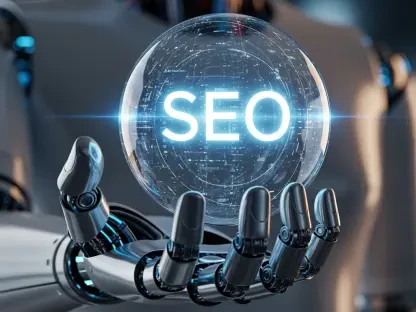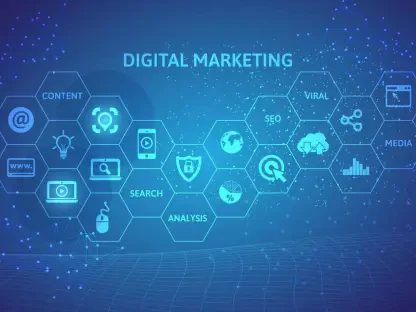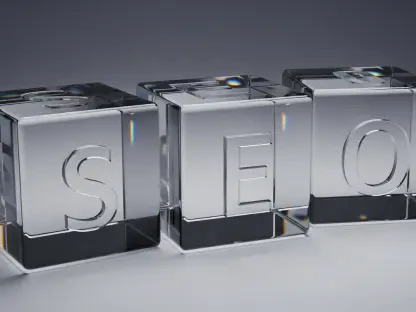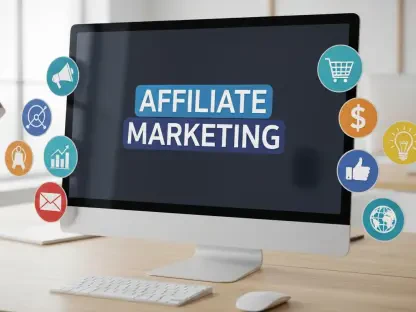In the ever-evolving world of digital marketing, Google’s introduction of Search Max has marked a pivotal shift in the approach to search advertising. This powerful AI-driven tool aims to transform the landscape by integrating advanced automation and machine learning into search campaign management. Search Max combines the functionalities of tools like Performance Max, Dynamic Search Ads, and broad match keywords into a singular, cohesive system. This innovation represents a significant leap forward, effectively streamlining and optimizing advertising processes.
Advertisers face a new opportunity to enhance their strategies by utilizing Search Max’s ability to automate keyword targeting and dynamic content optimization. By synthesizing user intent with campaign assets, Search Max eliminates the need for manual keyword selection, driving more precise and effective ad placements. As Search Max is currently in its closed beta phase, its full potential is yet to be realized, but early adopters are already noticing the benefits of enhanced reach and efficiency in search campaign management. This tool not only promises to increase the scope of search reach but also demands a reevaluation of traditional practices, emphasizing quality content and strategic planning.
Technological Advancements and Innovations
One of the standout features of Search Max lies in its sophisticated search term matching capabilities. This technology leverages AI to extend the reach of search campaigns by intelligently matching campaign assets with search queries based on user intent. This represents a significant deviation from traditional keyword-based targeting, shifting the focus to AI-driven decision-making. As advertisers feed quality creative content and meaningful messaging into the system, the AI optimally matches this with potential audiences, promising more relevant engagements.
Further enhancing this innovative tool is its ability to optimize text and URLs in real-time. The system autonomously selects the most appropriate landing page for specific queries, adapts ad messaging according to contextual needs, and continually refines these elements based on real-time performance data. This aspect of Search Max underscores the increasing reliance on data-driven strategies, prompting advertisers to pay closer attention to their content marketing plans. Dynamic adjustments in ad messaging and destination choices ensure advertisers can maximize conversion potentials with minimal manual intervention.
The shift from human decision-making to AI-guided strategies requires advertisers to adapt their methods, focusing on crafting high-quality content that enables the AI to deliver optimal results. Understanding the mechanics of AI-driven search term matching and dynamic optimization will be crucial for marketers looking to leverage Search Max’s full potential. This evolution illustrates how AI continues to reshape the advertising paradigm, pushing the boundaries of targeting precision and efficiency.
Benefits and Strategic Implications
Search Max presents a host of benefits that promise to revolutionize search advertising. By automating campaign elements such as targeting, creative generation, and landing page selection, advertisers can significantly reduce their manual workload, freeing them to concentrate on broader strategic initiatives and storytelling elements of their campaigns. This automation facilitates a more creative approach to marketing by allowing marketers to channel their energy into developing compelling narratives while AI manages the technical aspects.
Moreover, the enhanced reach facilitated by Search Max is another significant advantage, as it captures search queries that might not be covered by existing keyword lists. This presents new opportunities for advertisers to engage with audiences they may not have previously targeted, potentially boosting click-through and conversion rates. Continuous learning and real-time optimization ensure that campaigns are performing at their highest possible efficiency without the need for constant manual adjustments.
However, with these benefits come challenges, notably in relinquishing control over certain aspects of campaign management to AI. The transition to automation raises concerns about the potential loss of control over targeting and ad placements, with the risk of escalating ad spend without corresponding returns. Additionally, the broader audience reach might not always result in engaging with ideal prospects, and reporting on campaign performance can lack the desired transparency and granularity, posing obstacles in campaign optimization.
Preparing for Implementation and Industry Perspectives
To optimize the use of Search Max, advertisers must focus on fortifying the fundamentals of their campaigns. Establishing a clean account structure, ensuring accurate conversion tracking, and utilizing historical data are essential steps in laying the groundwork. Additionally, optimizing landing pages and formulating a robust negative keyword strategy can help mitigate the risks associated with broader targeting. Structured testing before a full rollout of Search Max allows advertisers to assess impact and make informed decisions about adjustments and investments.
Financial planning also becomes crucial under Search Max’s expanded reach as advertisers must anticipate increased impressions and clicks. Setting clear budgeting goals aids in managing any unexpected increases in ad spending, ensuring alignment with overall marketing objectives. Industry voices indicate a mixed reception, with some seeing Search Max as a natural extension of existing Google automation tools, while others express unease over reduced transparency and control. Discussions within professional circles and social media highlight the ongoing debate over Search Max’s role—is it an enhancement of previously automated features or a wholly new approach?
While marketers weigh the pros and cons, Search Max undeniably represents an ambitious step forward in utilizing AI to drive advertising efficiency. Whether it will cement itself as a staple in every advertiser’s toolkit or remain an additional option depends on its integration and value demonstration over time. Understanding and adapting to its capabilities is imperative for digital marketers aiming to thrive in this AI-driven shift.
Navigating the Future with Search Max
Search Max distinguishes itself with its advanced search term matching capabilities, which employ AI to extend the reach of search campaigns. By intelligently connecting campaign assets with user search queries based on intent, this technology marks a departure from traditional keyword-based targeting, pivoting to AI-driven decision-making. With well-crafted creative content and meaningful messaging, advertisers can ensure the AI matches these elements with suitable audiences, leading to more relevant interactions.
A crucial feature of this tool is its ability to refine texts and URLs in real-time. It autonomously chooses the best landing page for each query and adjusts ad messaging to fit the context, based on performance data collected in real-time. This highlights the growing trend of data-reliant strategies, urging advertisers to focus on their content marketing strategies even more. The dynamic changes in ad messages and destination selections allow advertisers to maximize their conversion rates with less manual effort.
This transition from human-led to AI-guided strategies compels advertisers to develop high-quality content that enables AI to yield optimal outcomes. To fully harness Search Max, marketers need to grasp AI-driven search term matching and dynamic optimization. This development showcases how AI is transforming advertising, enhancing targeting efficiency and precision.









